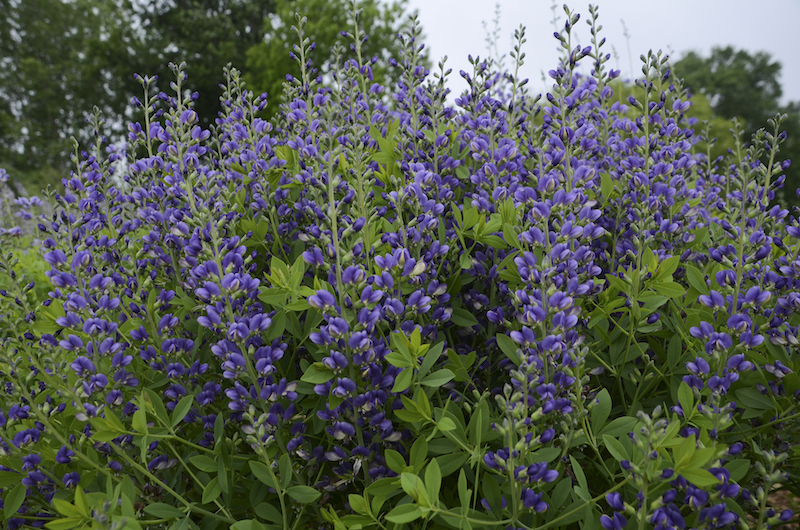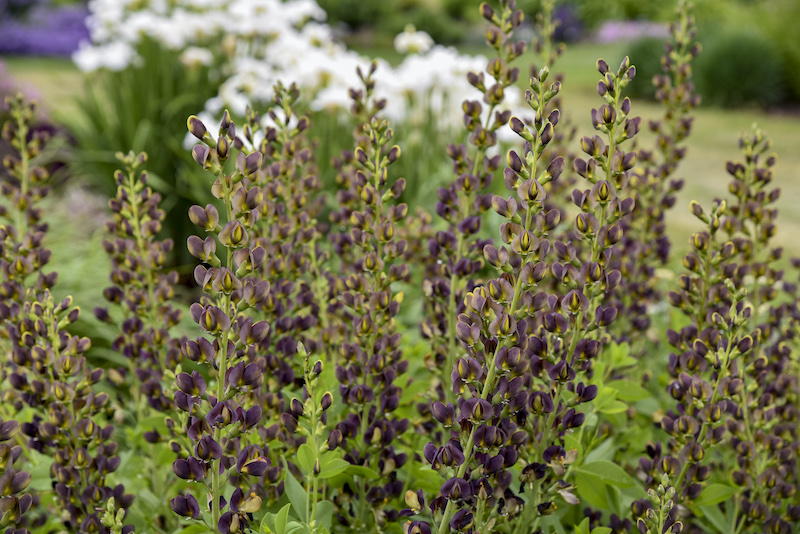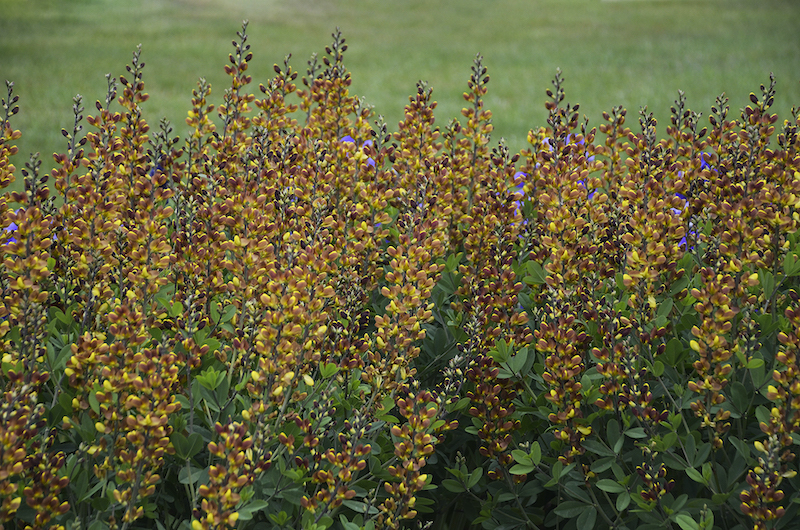False Indigo flowers in late spring or early summer depending on the geographic location, and bloom time typically lasts for 3 to 6 weeks. The flowers appear on long stalks or racemes and are held tight to the stem. Younger plants produce few flower stalks, but the number will increase as the plant matures. It can take a young plant 2 to 3 years to bloom. If older plants are not blooming, the cause may be too much fertilizer or lack of full sunlight.

Common Reasons Why False Indigo Isn’t Blooming
Young plants need time to settle in before they bloom. A newly planted false indigo can take 2-3 years before blooming. For an older plant, too much commercial fertilizer, lack of full sun (6 to 8 hours or more), damage to the plant’s crown, or poor cultivation practices can all contribute to a plant’s lack of blooms.
Pruning False Indigo To Help It Bloom
If anything, the best thing a gardener can do to get their False Indigo to bloom successfully is to leave it alone. Provided it has been planted in average garden soil and given ample water to survive its first year, it is really a waiting game from there on. The plant requires 2 to 3 years after planting to bloom. Deer and small herbivores are not attracted to this perennial.

Fertilizing False Indigo To Help It Bloom
Do not apply commercial fertilizer to this perennial as it may do more harm than good. False Indigo is a legume family member and fixes its own nitrogen in the soil. It does not require supplemental nutrients if planted in average garden soil. It will even do well in poor soil, provided it has been given ample moisture to develop a long taproot in its early years.
Get False Indigo To Produce More Blooms
False Indigo will produce more blooms with age. It may be beneficial to give it a light mulch of compost if desired, but mulching is not necessary and will have little impact on the plant's bloom quantity. False indigo blooms only once a season, after which it produces showy, black pods if the plant is not deadheaded.
Make sure the plant is receiving full sun and adequate moisture levels. False indigo appreciates evenly moist soil, but does not tolerate poor drainage and boggy conditions. You may need to transplant your False Indigo to a better site if these conditions are not met. Keep in mind that this tap-rooted plant does not like to be moved and may sulk for a year or two after transplant.

Why False Indigo Isn’t Blooming
- Too much fertilizer
- Lack of direct sunshine, 6 to 8 hours or more
- Plant is not mature enough
- Soil is too rich or boggy
- Plant’s crown may have been damaged
 |
Author Chris Link - Published 08-10-2022 |
